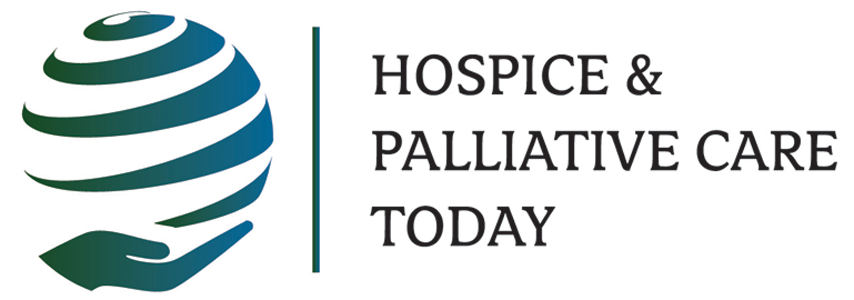Sign up for our free daily newsletters here! Note: subscribers can access our search feature!
Welcome to Hospice & Palliative Care Today, a daily email summarizing numerous topics essential for understanding the current landscape of serious illness and end-of-life care. Teleios Collaborative Network podcasts review Hospice & Palliative Care Today monthly content - click here for these and all TCN Talks podcasts.
Saturday newsletters focus on headlines and research - enjoy!
2. Statewide and regional variation in hospice and palliative care protocols in emergency medical services in the United States
3. Hospice and palliative medicine fellows' perspectives on physician-assisted dying education: Hospice and palliative medicine fellows' perspectives on physician-assisted dying
4. Bringing death into the conversation: Communication strategies for discussing assisted dying in palliative care
5. Assessing the impact of focused end-of-life training on resident physicians' comfort with care for the dying patient
6. The hidden influence of social narratives on end-of-life decisions
7. Hospice enrollment in young adult LGBTQ + decedents with cancer: A multi-site single healthcare system study
8. Homeless services data vs health records to recognize homelessness
9. Trends in private equity acquisitions of assisted living facilities
10. End-of-life care for older adults with dementia by race and ethnicity and physicians’ role
12. [Saudi Arabia] Comparison of end-of-life care between patients with hematological malignancies versus solid tumors: A retrospective analysis
Omega (Westport); by Sherilyn L Herron, Pamela Aselton, Raeann G LeBlanc; 11/25
This article presents findings from a qualitative phenomenological study exploring the lived experience of nurses who have witnessed end-of-life dreams and visions (ELDVs) of dying patients. Using Seidman's Three-Interview Series, conducted asynchronously via email, eight nurses from Western Massachusetts contributed six comprehensive and two partial experiential accounts. The study revealed that witnessing these deathbed phenomena was a profound experience, often accompanied by feelings of awe, humility, and a deep sense of privilege. Participants described themselves as guides during the dying process, providing emotional and spiritual support to patients and their families. Though ELDVs have been recorded for centuries, nurses often remain hesitant to share their experiences due to the lingering taboo surrounding the topic, fueled by fears of judgment and the risk of their experiences being minimized, invalidated, or dismissed.
Prehospital Emergency Care; by Satheesh Gunaga, David H Yang, Kenneth Hanson, E Jane Merkle-Scotland, Sameer Jagani, Amelia M Breyre; 11/25
Across the U.S., HPC [hospice and palliative care] protocols remain inconsistently integrated into EMS [emergency medical services] systems. Fewer than one in four reviewed protocols included any HPC-specific guidance, and most lacked comprehensive components recommended by national guidelines. Broader adoption of HPC protocols and alignment with expert recommendations may improve the delivery of compassionate, goal-concordant care to a growing population of seriously ill patients in the out-of-hospital setting.
 |
Hospice and palliative medicine fellows' perspectives on physician-assisted dying education: Hospice and palliative medicine fellows' perspectives on physician-assisted dying
Journal of Pain & Symptom Management; by James Cescon, Antoinette Esce, Melanie Koren, Edith Meyerson, Mollie A Biewald, Robert M Arnold, Anup Bharani, Laura Belland; 11/25
Physician-Assisted Dying (PAD) is legal in a growing number of U.S. states, with access expanding nationally due to recent legislative changes. An anonymous nine-item survey was sent to all HPM fellows (N=21) at the Icahn School of Medicine at Mount Sinai. All respondents agreed that learning about PAD in fellowship is important. Topics of interest included ethical considerations (95%), legal criteria (86%), responding to requests in serious illness conversations (86%), navigating requests (76%), and pharmacology/modes of ingestion (71%). While only 10% intended to provide PAD in future practice, 57% were unsure or had not thought about it, and 33% were not considering it. These findings underscore a clear educational need and may guide curriculum development.
Ethics, Medicine and Public Health; by A. Avakian, K. Avakian, A. Singh; 11/25
 |
Academic Pediatrics; by Alissa Puzo, Sivan Stein, Sandrene Cassells, Rachel Rothstein, Erin Tully, Annie L. Gula, Kaylie Shojaie, Wynne Morrison, Jeanine C. Ronan, Tara Bamat; Nov-Dec 2025
The hidden influence of social narratives on end-of-life decisions
Journal of Applied Social Science; by Stephanie Smith; 11/25
Widespread exposure to idealized and distorted portrayals of death across news media, entertainment, and advertising has reshaped societal understandings of mortality. Often depicted as rare, swift, conquerable, or emotionally distant, death is stripped of realistic representation, obscuring the complexities of the dying process. Drawing on social cognitive theory, this interdisciplinary conceptual analysis examines how such portrayals function as behavioral models—shaping individual attitudes toward mortality, influencing end-of-life care decisions, and informing public health policy and resource allocation. Addressing these distortions requires a cross‑disciplinary shift in cultural attitudes, bringing together storytellers, clinicians, educators, and policymakers to integrate authentic portrayals of dying into public discourse, reframe aging as a valued stage of life, and expand access to death education. Such efforts can dismantle harmful myths, support informed decision-making, and guide healthcare systems toward practices that balance medical possibility with human dignity.
 |
Hospice enrollment in young adult LGBTQ + decedents with cancer: A multi-site single healthcare system study
BMC Palliative Care; by Sanjna Rajput, Riham Suleiman, Brittany Kimball, Aminah Jatoi, Elizabeth Cathcart-Rake; 11/25
Methods [for the study]: A single healthcare system, 4000 + self-reported LGBTQ + database of patients with cancer identified young adult decedents (18-39 years old at death) to report the percentage who died with hospice, the conversations that preceded hospice enrollment, time-on-hospice, and circumstances that surrounded the deaths of those not enrolled. From the database, ... 67% ... were enrolled in hospice ... Conversations that preceded enrollment discussed (1) limited cancer therapeutic options with worsening end-of-life symptoms and how hospice could help ("discussed… decline and how patient would not want to die hooked up to machines"); (2) medical staff's acknowledgement of same sex spouse/life partners ("[She] is here with her wife"); (3) the inclusion of the birth family in end-of-life discussions, especially if the decedent had been single ("Her father met us… this was difficult news for him to hear."). Conclusions: Most young adult LGBTQ + decedents with cancer receive hospice services with thoughtful and inclusive conversations that precede enrollment.
JAMA Health Forum; by Mario A. Pita, C. Holland McDowell, Phillip Ma, Hanna Haile, Daniel Ludi, Niraj Gowda, Jillian S. Catalanotti; 11/25
 |
JAMA Network Open; by Jennifer N. Bunker, Yashaswini Singh, Gauri Gadkari, John Bowblis, Lindsey Smith, Paula Carder, Sean Huang, Momotazur Rahman, Kali S. Thomas; 11/25
JAMA Health Forum; by Deborah M. Oyeyemi, Ryo Ikesu, Debra Saliba, Anne M. Walling, Utibe R. Essien, Keith C. Norris, Alexandra Klomhaus, Haiyong Xu, Hiroshi Gotanda, Yusuke Tsugawa; 11/25
 |
Clinical Medicine; by Christopher Cussen, Amy Watret; 11/25
[Saudi Arabia] Comparison of end-of-life care between patients with hematological malignancies versus solid tumors: A retrospective analysis
Journal of Palliative Care; by Salma Almusaed, Kim Sadler, Walaa Abdulmutaali, Gassan Abudari, Steven Callaghan, Mahmoud Sroor, Muneerah Almutairi, Mohammed AlGhamdi, Muruf Zaid Alshalwah, Sameer Desai, Nessreen Abu Alsalhm, Khloud Alzain; 11/25
While specialized palliative care (PC) is well-established for managing STs [solid tumors], its integration into HMs’ [hematological malignancies] care remains less common despite evidence of its benefits. The cohort consisted of 350 adult patients, of whom 86 (24.6%) had HMs and 264 (75.4%) had STs. Overall, HMs patients received more aggressive end-of-life care, including higher rates of Intensive Care Unit (ICU) admissions (81.4% vs 17.8%), intubation (36% vs 8.3%), disease-modifying treatments (23% vs 3.8%), as well as more enteral feeding, dialysis, blood transfusions, and antimicrobial use. Their resuscitation discussions occurred closer to death (3 vs 16 days ... ). Additionally, HMs patients had fewer referrals to PC services (43% vs 79.2% ... ), and most of them died in the ICU (59.3% vs 18.2% ... ).
 |
The Fine Print:
Paywalls: Some links may take readers to articles that either require registration or are behind a paywall. Disclaimer: Hospice & Palliative Care Today provides brief summaries of news stories of interest to hospice, palliative, and end-of-life care professionals (typically taken directly from the source article). Hospice & Palliative Care Today is not responsible or liable for the validity or reliability of information in these articles and directs the reader to authors of the source articles for questions or comments. Additionally, Dr. Cordt Kassner, Publisher, and Dr. Joy Berger, Editor in Chief, welcome your feedback regarding content of Hospice & Palliative Care Today. Unsubscribe: Hospice & Palliative Care Today is a free subscription email. If you believe you have received this email in error, or if you no longer wish to receive Hospice & Palliative Care Today, please unsubscribe here or reply to this email with the message “Unsubscribe”. Thank you.

